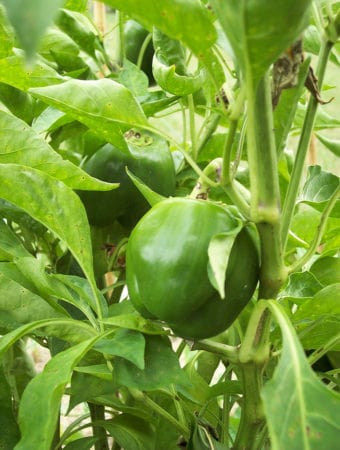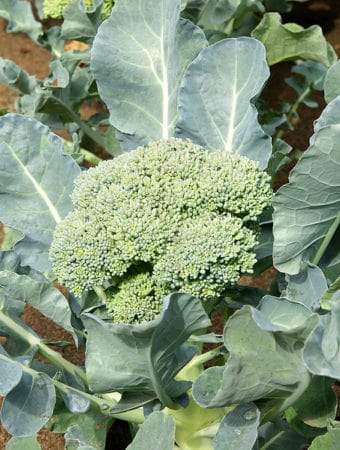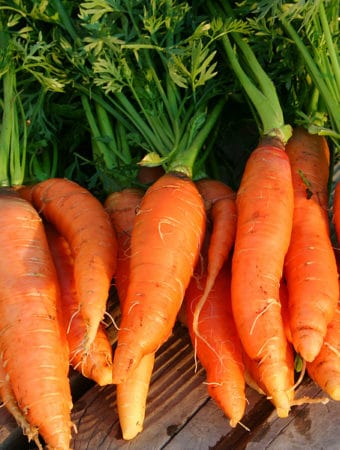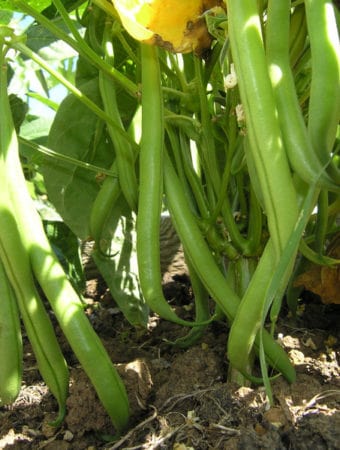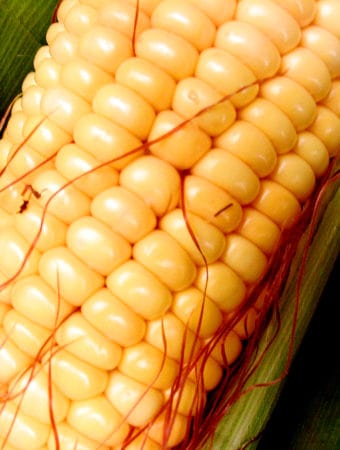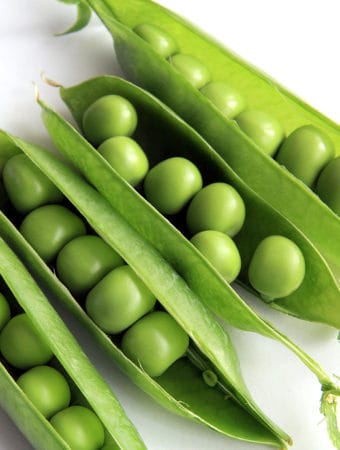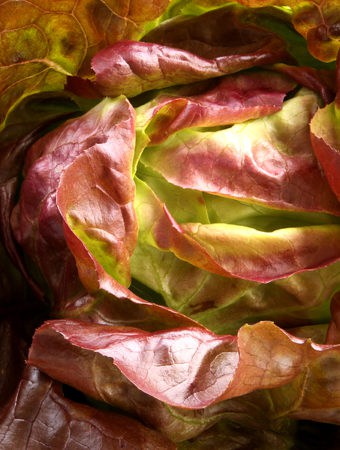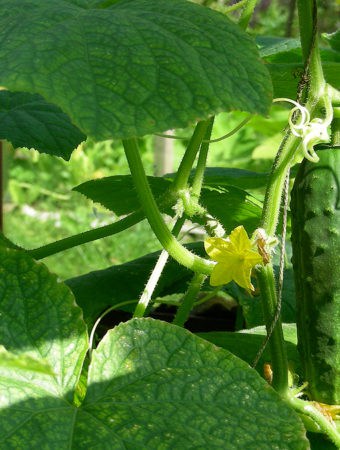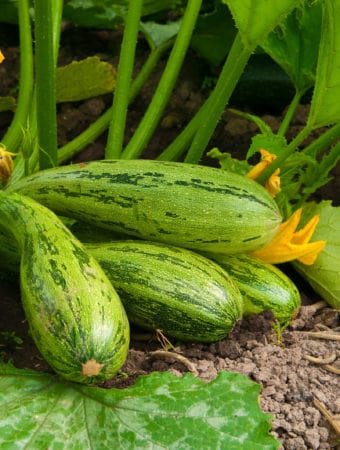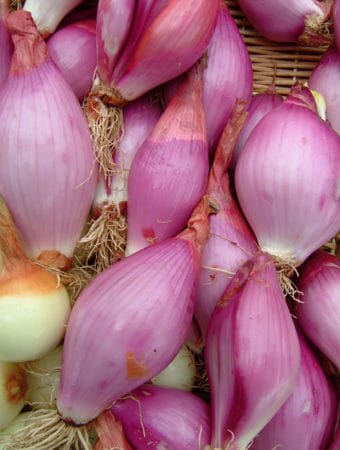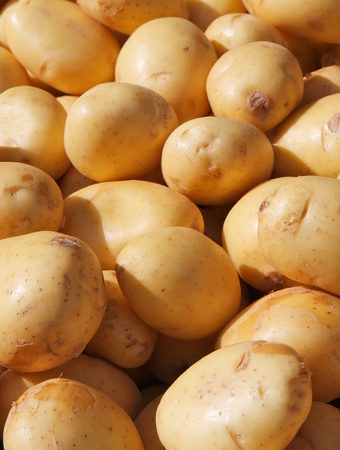Succession planting means growing different crops in the same space one right after the other in the same season or planting the same crop in different parts of the garden in succession at different times. Succession planting results in a succession of harvests–a long continuous harvest season.
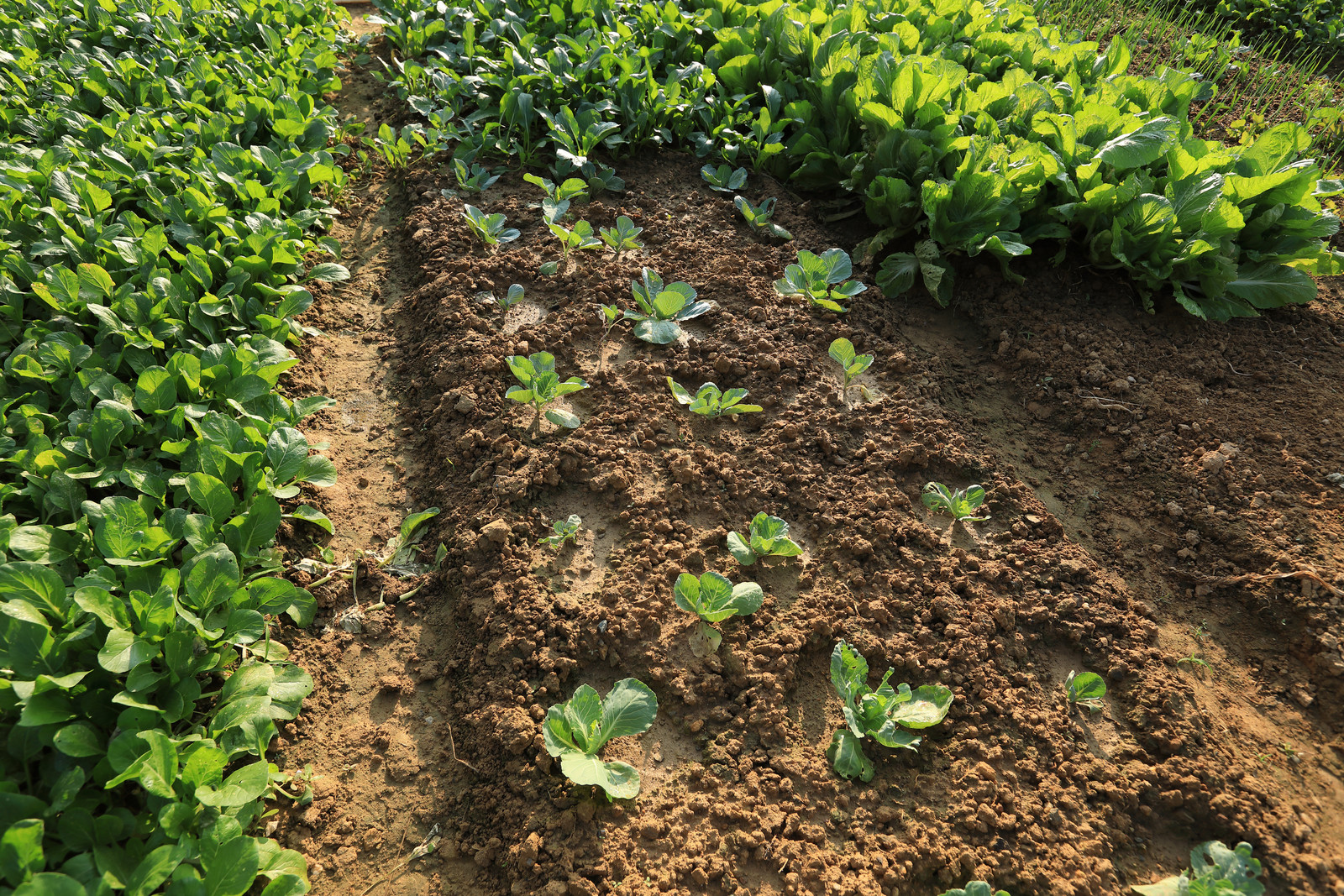
Succession cropping will help you get the most out of your vegetable garden.
Two succession cropping strategies
- Plant a portion of a specific crop a little bit at a time; for example, plant a row of beans today and a second row three weeks from now. This will allow for a staggered succession of harvests.
- Plant a crop today and after harvesting the crop, plant a second crop in the same place for a second harvest. For example, plant beets in the cool spring and follow with a crop of peppers during the warm summer.
Two succession planting examples
- A row of carrots is planted in early spring: after the carrots are harvested in early summer, the vacated row is re-planted with snap beans for harvest in early fall. The two crops are grown on the same ground,
- A planting bed is divided into three sections: the first sowing of radishes is planted in the first section; in 10 days, the second section is planted with radishes; in another 10 days, the third section is planted with radishes. Successive sowings of the same crop are made in different locations at 10-day intervals.
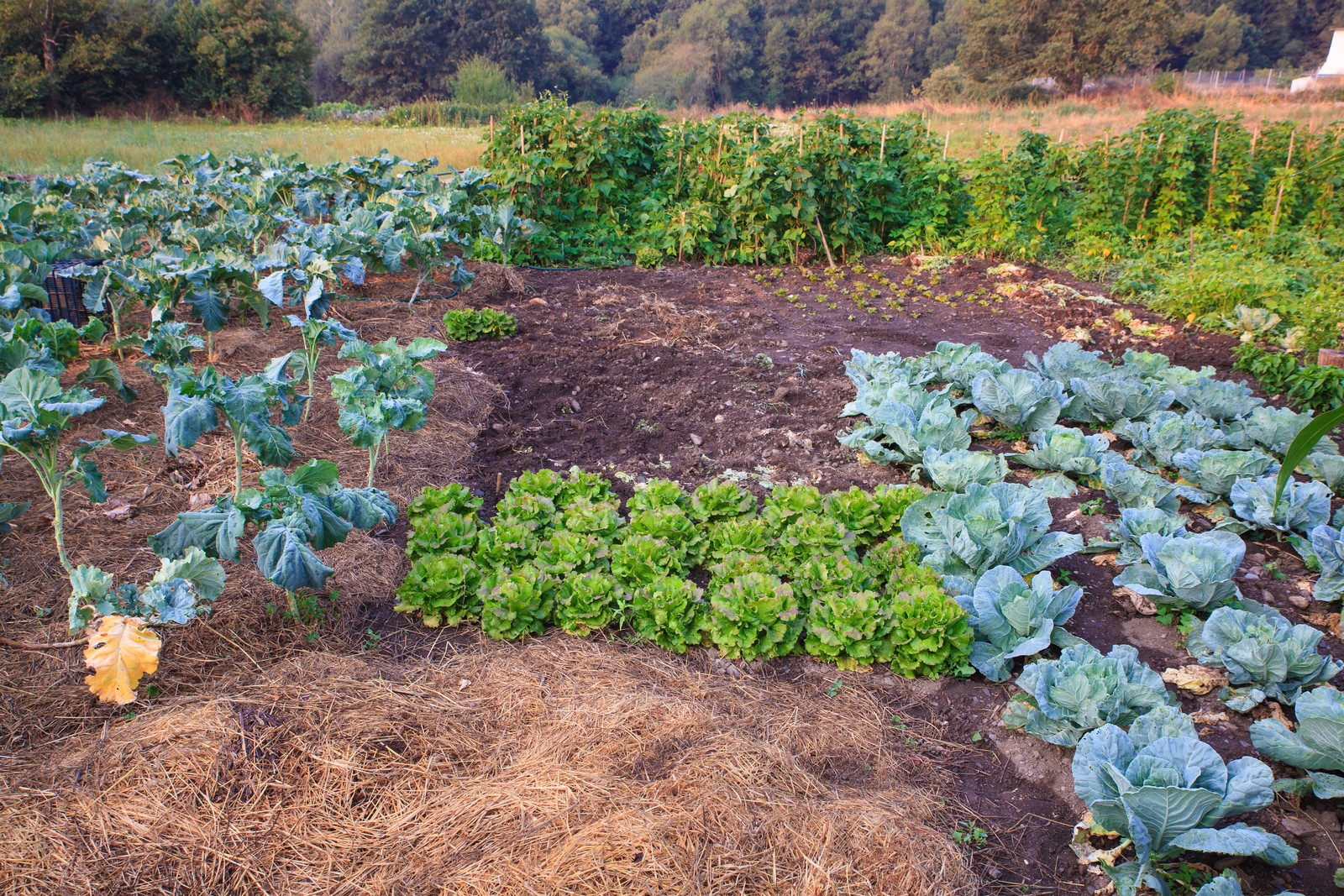
Succession planting planning
Succession planting will allow you to plant several times throughout the growing season for a continuous supply of fresh vegetables.
When planning your succession cropping keep the following in mind:
- The number of weeks of growing season in your garden. The length of the growing season is the number of weeks between the last frost in spring and the first frost in autumn. The local cooperative extension office can tell you the length of the growing season in your location or you can ask an experienced gardener at a nearby garden center.
- The number of weeks each crop you wish to grow requires to germinate, grow, and reach harvestable size. The chart below will help you make these calculations. Note the number of weeks a particular crop require in the garden can vary by variety–for example, some varieties of corn require more days to reach harvest than others.
- Days to maturity and date of the expected harvest. Each plant requires so many days from sowing to reach harvest. The days to maturity for a crop and a succession crop must fit comfortably into your growing season–the total number of frost-free days or growing days for each crop. (Or you must plan to protect your crops from killing cold weather.) Be sure to plant warm-season crops so that they will come to harvest in warm weather.
- Nutrient requirements. Crops from the same family are best not planted in succession; they have the same nutrient requirements and will leave the soil lacking in specific nutrients if planted one after the other. Allow for crop rotation or be sure to work well-aged compost or manure into the soil before sowing the second crop. Crops from the same family also will be susceptible to the same pests and
Succession cropping planning formula
The number of days to harvest for crop #1 + the number of days to harvest for crop #2 = the total number of days in the garden. You can add crop #3 as long as the total continues to be less than the number of days in the growing season.
One more note, growing seasons can be extended on either end by a few weeks with the use of season extenders: cloches, plastic tunnels, and cold frames. Season extenders keep the growing temperatures right for crops.
Crop successions that can fill the same garden space for 7 to 8 months
• Cabbage→ Green Onions→ Spinach
• Carrot→ Beets→ Peppers
• Lettuce → Peas → Turnips
• Radish → Corn → Winter Squash
• Snap Beans → Broccoli
• Kale → Cucumbers
• Melons → Pumpkins → Beets
• Broad Beans → Cauliflower
• Potatoes → Broccoli
• Spinach → Sweet Potatoes
• Asparagus → Summer Squash
• Green Onions → Garlic
• Corn → Rutabagas
• Chard → Melons → Endive
Suggested succession planner
Use the following chart to help plan your garden successions. Note the harvest period can extend over several weeks, for example, baby carrots are harvested well before mature carrots, and the number of weeks to maturity can vary by crop variety.
| Vegetable | Weeks to maturity | Weeks in extended harvest period | Possible number of successions in 8 months | Plants per person each planting |
|---|---|---|---|---|
| Asparagus | seed: 4 yrs root: 1 yr | 8 | 1 | 5 |
| Artichoke | perennial | 8 | 1 | 1 |
| Arugula | 6 | 2-4 | 4 | 5 |
| Beans, snap | 8 | 6-10 | 2 | 15 |
| Beans, shell | 8-9 | 6-10 | 1-2 | 20 |
| Beans, dried | 9+ | 2 | 1 | 20 |
| Beets | 8-9 | 3-6 | 4 | 15 |
| Broccoli | 8-9 | 6 | 2 | 5 |
| Brussels sprouts | 11-13 | 6-10 | 1 | 2 |
| Cabbage | 9-16 | 4 | 2 | 2-3 |
| Carrots | 9-11 | 9-11 | 3 | 50 |
| Cauliflower | 8-12 | 2 | 2 | 1 |
| Celery | 12-16 | 11 | 2 | 5 |
| Chard, Swiss | 7-8 | 6-20 | 2 | 3 |
| Chinese cabbage | 7-12 | 4 | 3-4 | 5 |
| Collards | 12 | 8-16 | 2 | 5 |
| Corn salad (mâche) | 8-11 | 1-2 | 8 | 10 |
| Corn, sweet | 9-13 | 1 | 3 | 10-15 |
| Cucumber | 7-10 | 8 | 2 | 3 |
| Eggplant | 10-11 | 10 | 1 | 3 |
| Escarole-endive | 6-7 | 6 | 3 | 6 |
| Florence fennel | 9-13 | 6 | 3 | 10 |
| Garlic | 17-44 | 4 | 2 | 1-3 |
| Horseradish | 26 | 12-15 | 1 | 1 |
| Kale | 8-9 | 6-15 | 2 | 5 |
| Kohlrabi | 7-8 | 2 | 2 | 6 |
| Leeks | 19 | 6-15 | 1 | 10-25 |
| Lettuce, leaf | 6-12 | 3-6 | 4 | 8 |
| Melons | 12-17 | 6-10 | 1 | 3 |
| Mustard greens | 5-6 | 6-12 | 3 | 5 |
| New Zealand spinach | 10 | 6-12 | 1 | 3 |
| Okra | 7-8 | 6-12 | 1 | 5 |
| Onions, bulb | 14-17 | 6 | 1 | 20 |
| Onions, bunching | 8-17 | 6-12 | 1 | 20 |
| Parsnips | 15 | 6-15 | 1 | 12 |
| Peas (snap and shell) | 8-11 | 4-8 | 2 | 30-50 |
| Peanuts | 14-21 | 2-3 | 1 | 5-10 |
| Peppers (sweet) | 9-12 | 8-12 | 1 | 3 |
| Potatoes (Irish) | 9-17 | 2-3 | 2 | 5 |
| Pumpkins | 14-16 | 4-6 | 1 | 1 |
| Radicchio | 12 | 5 | 1 | 10 |
| Radish | 3-9 | 1-2 | 8 | 12 |
| Rutabaga | 13 | 3-6 | 1 | 5 |
| Salsify | 17 | 6-15 | 1 | 12 |
| Scallions | 17-26 | 10-12 | 2 | 20-25 |
| Shallots | 9-17 | 4-6 | 2 | 3 |
| Spinach | 6-7 | 3-6 | 4 | 10 |
| Squash, summer | 7-10 | 6-12 | 2 | 1-2 |
| Squash, winter | 11-17 | 2-4 | 1 | 2 |
| Sunchoke | 17 | 8-16 | 1 | 4 |
| Sunflower | 10-11 | 2 | 1 | 2 |
| Sweet potatoes | 13-34 | 4-8 | 1 | 5 |
| Tomatillos | 17 | 6-15 | 1 | 1-2 |
| Tomatoes | 8-13 | 6-15 | 1 | 3 |
| Turnips | 5-10 | 2-4 | 2 | 3-5 |
| Turnip greens | 5 | 2-6 | 4 | 2-3 |
| Watermelon | 10-13 | 6-10 | 1 | 1 |
| Zucchini | 7-9 | 6-12 | 2 | 1 |
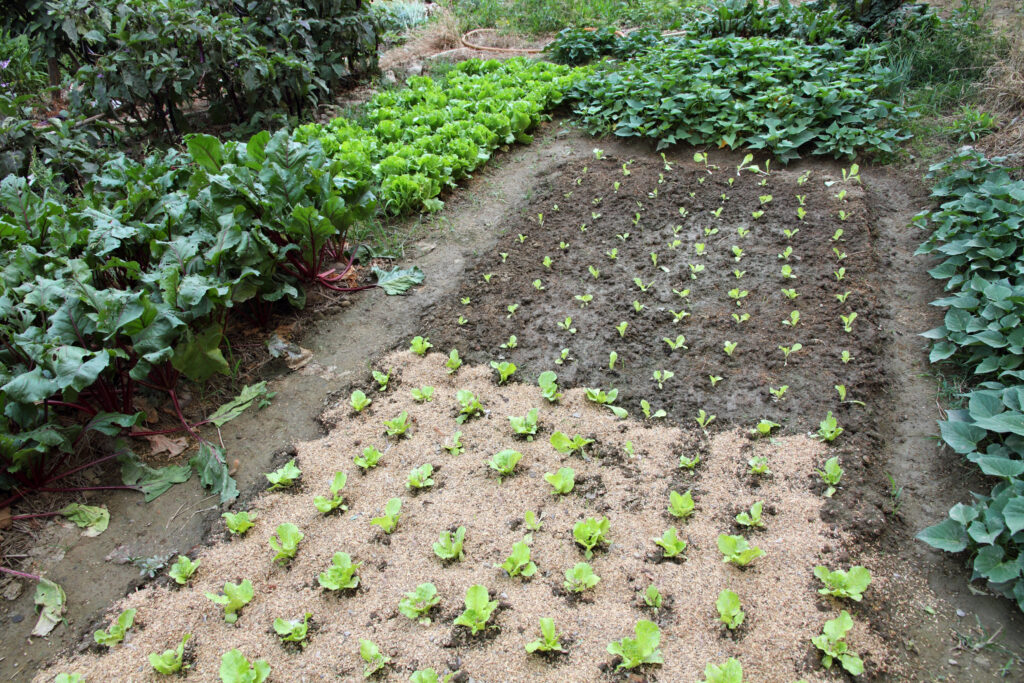
Step-by-step succession crop planning
- Make a list of the crops you want to grow.
- Know the number of days in the growing season, the approximate number of days between the last expected frost in spring, and the first expected frost in fall. This is the growing season. Ask: is summer long enough to grow the crop you have in mind? Is it long enough to grow a second crop in the same spot or a third crop?
- Know the number of days to harvest each crop you plan to grow: the time in the garden for long-staying main crops and for quick-maturing early crops or late crops.
- Decide if the growing season will be extended in spring or autumn by the use of protection: cloches, floating row covers, plastic tunnels, or cold frames. Season-extension devices add days to your growing season.
- Make a map or chart of the growing space or planting beds for the beginning, middle, and end of the growing season: what spaces will be vacant and when.
- Be flexible: soil and air temperatures, the weather, pests, diseases, and other unforeseen events may alter your plans.
To know the number of days to maturity of many vegetable varieties, look up each vegetable under its name in the Topics Index or check the How to Grow Archive for each plant.
Succession-cropping suggestions
| Crop coming out | Succession crops to follow |
|---|---|
| Artichoke, globe | Green bean, pea |
| Broad bean, fava bean | Autumn harvest cabbage, peas, kohlrabi, lettuce, New Zealand spinach |
| Bush green or snap bean | Main lettuce, endive, summer and winter spinach, kohlrabi, parsley |
| Brussels sprouts, late spring cabbage, corn, squash, kale, cardoon | Pole green or snap bean (longer cropping season than a bush bean) |
| Beet | Broad, bush or pole green or snap bean, kale, pepper, chicory |
| Broccoli | Celery, leek, maincrop potato, corn, kohlrabi, tomato, sunchoke |
| Brussels sprouts | Early and second early potatoes, beet, celery, leek, mint, shallot, sunchoke |
| Cabbage (spring harvest) | Radish, beet, kohlrabi, onion |
| Cabbage (autumn harvest) | Early potatoes, cucumber, radish, pepper, celeriac, chives, squash, sunflower |
| Carrot | Bush or pole beans, autumn harvest cabbage |
| Cauliflower | Pea, maincrop potato, summer spinach, rutabaga |
| Celeriac | Broad bean |
| Celery | Garlic, mint, onion, shallot, savory |
| Chicory | Broad bean, Brussels sprouts, carrot |
| Chives | Broad or green bean, spring harvest cabbage, endive, corn, lettuce |
| Corn (sweet) | Pea, summer, and winter spinach, broad bean, autumn harvest cabbage |
| Cucumber | Maincrop potato, onion, pea, autumn harvest cabbage, carrot |
| Garlic | Broad or green snap bean, kale, cauliflower, broccoli, autumn harvest cabbage |
| Kale | Broad bean, pepper, early potato, carrot, rhubarb, celeriac |
| Kohlrabi | Potato, celery, leek |
| Leek | Tomato, green bush or pole bean, cucumber |
| Lentil | Corn, cauliflower, corn salad, endive, kohlrabi, onion, radish |
| Lettuce | Potato, celery , leek |
| New Zealand spinach | Maincrop potatoes, corn, autumn harvest cabbage, Brussels sprouts |
| Onion | Spring harvest cabbage |
| Parsnip | Kale, broad bean, pepper, rhubarb, sunflower |
| Pea | Brussels sprouts, celery, spring harvest cabbage, autumn harvest cabbage, carrot, turnip, tomato, autumn harvest cauliflower, cucumber, squash, autumn-sown onions, winter spinach, leek |
| Pepper | Lettuce onion, radish, winter spinach |
| Potato (early) | Spring harvest cabbage, Brussels sprouts, strawberries, tomato |
| Potato (second early) | Kale, cabbage, savoy, pea |
| Potato (maincrop) | Sprouting broccoli, spring harvest cabbage |
| Rutabaga | Broad bean |
| Spinach | Celery, second early potato, onion, tomato |
| Squash | Tomato, spinach, parsley, kohlrabi, chervil, cauliflower |
| Sunflower | Cabbage, winter squash |
| Tomato | Onion, green bean, radish, lettuce, pea, beet, autumn harvest cabbage, |
| Turnip | Pea, green bean |
Succession planting allows for a continuous, uninterrupted harvest. Succession planting is sometimes called relay cropping.
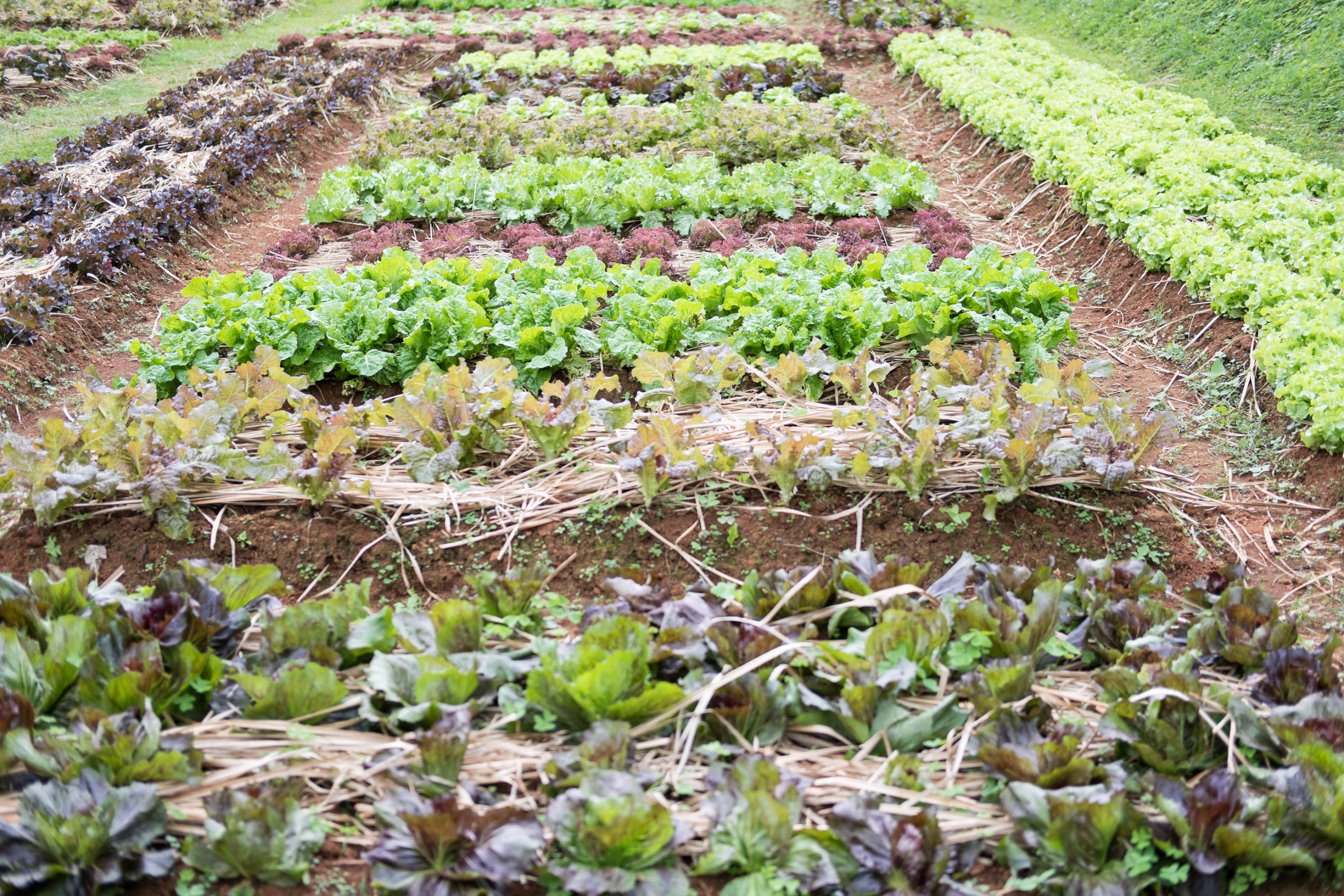
Succession planting is not crop rotation
Succession planting is different than rotation cropping. Rotation cropping is the practice of not planting the same crop in the same place for at least three successive years. Crop rotation ensures that the same plants or plants from the same family will not deplete the same soil nutrients year after year.
Whenever possible, do not plant successive crops of the same botanical family on the same ground. For example, root vegetables such as carrots or radishes should follow vegetables grown for their leaves or seeds, for example, lettuce or beans. In a small garden, this may be difficult. If you do grow the same vegetable in the same spot for two or three successive years, you must make extra efforts to keep the ground fertile (add plenty of aged compost between plantings) and remove immediately plants that become diseased.
There are no rules for succession planting. Any vegetable that is removed from the garden early enough in the season can be followed by any other crop which will have time to mature.
More succession planting examples
- Cool-season crops followed by warm-season crops: early beets and beet greens, early cabbage, carrots, cauliflower, kohlrabi, lettuce, green onions, peas, radishes, spinach, and turnips can be planted early–these crops are cool-weather crops. These crops can be followed by warm-weather crops such as beans, eggplant, melons, peppers, tomatoes, or squash.
- Warm-season crops followed by more warm-season crops: Bush beans, eggplant, melons, peppers, tomatoes, or squash can be followed by second plantings of the same crops. This is easily done in regions where summers are very long and winters are mild. If your growing season is 220 days or more, follow harvested warm-season crops with a second planting of warm-season crops.
- Warm-season crops followed by cool-season crops. Warm-season crops such as bush beans or peppers can be followed by a mid or late-summer planting of cool-weather crops that will mature in autumn. Beets, Chinese cabbage, collards, corn salad, endive, kale, leeks, lettuce, mustard, and Swiss chard are cool-season crops that can follow warm-season crops for late autumn and winter harvest.
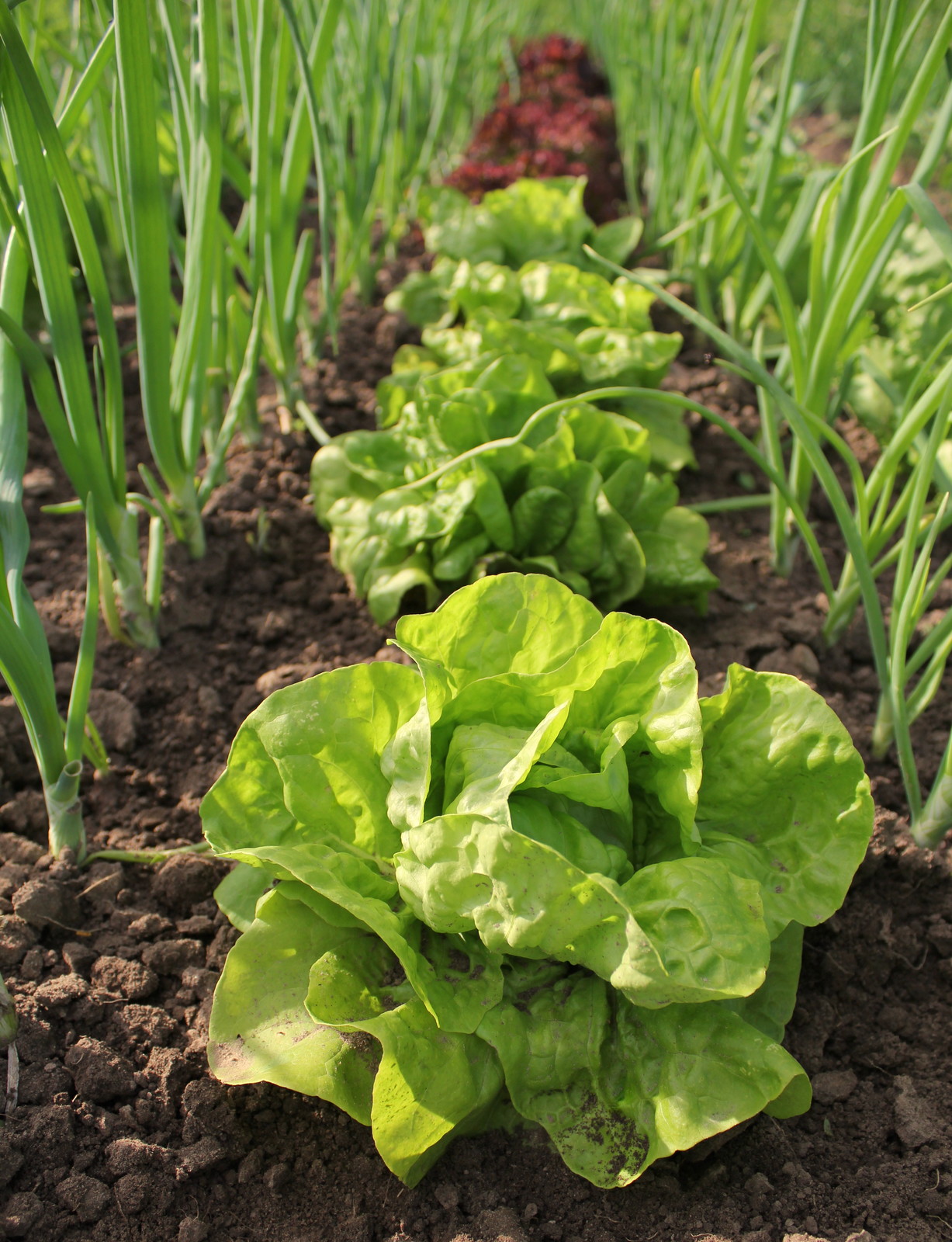
Intercropping–planting crops side-by-side
Another form of succession cropping is growing quick-to-harvest crops next to slow-to-harvest crops. This form of succession cropping is also called intercropping or interplanting. Intercropping is often used in small gardens with a limited amount of space. Intercropping works best when quick-maturing crops are planted between slower-maturing crops. Here are crops that fall into these categories:
- Quick-to-harvest crops include radishes, leaf lettuce, green bunching onions, turnips, and mustard greens. These crops require 60 days or less from sowing to harvest.
- Slow-to-harvest crops include tomatoes, corn, squash, cabbage, eggplant, and peppers. These crops require more than 60 days from sowing until harvest, often 90 days or more.
Catch cropping
Catch cropping is a term used for filling a space in the garden where a plant has been harvested. One plant comes out, a second plant goes in. Catch cropping can be a form of succession planting; no part of the garden is left vacant during the growing season.
The number of succession crops that can be grown in the garden in a growing season depends upon the days to maturity for each crop and the number of days in the growing season. In short-season regions, it is more realistic to aim for two successions of crops. In long-season regions, a gardener may plant three or four successions from spring to autumn.



